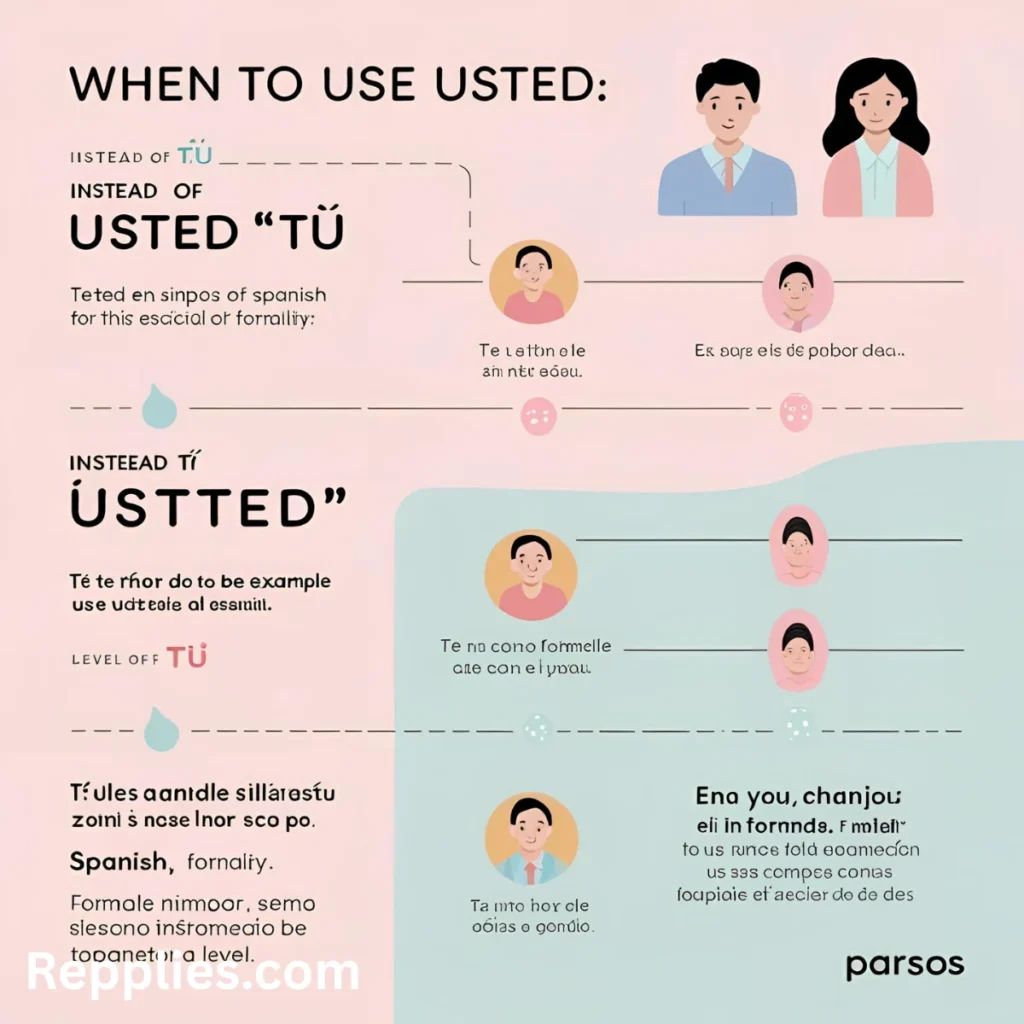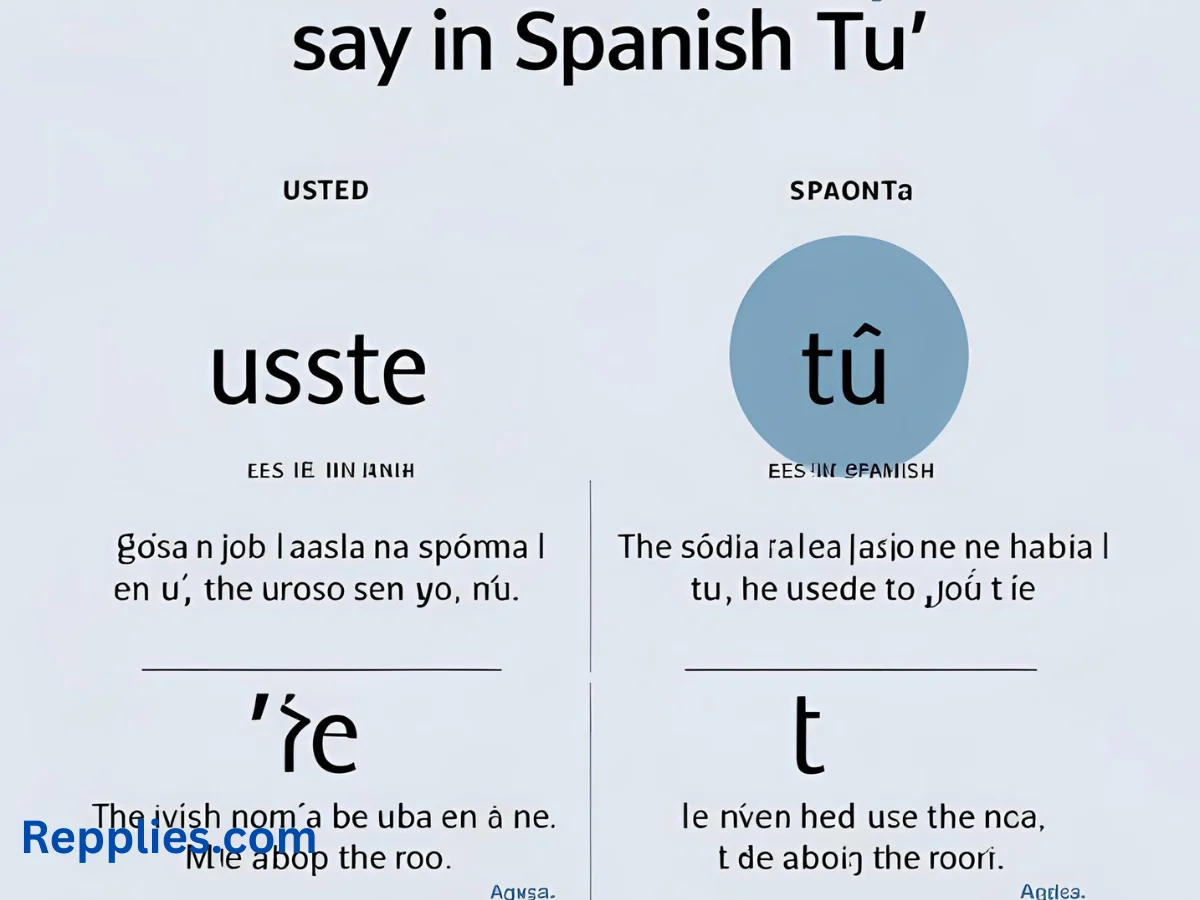You’re hunting for the perfect way to say you in Spanish, unsure if your words sound polite enough for that job interview, meeting, or formal letter. Stop searching—your answer is here. This article unlocks the formal Spanish pronoun usted, its uses, and practical tips to sound respectful in any situation. Whether you’re chatting with a boss, teacher, or stranger, you’ll master formal Spanish with ease.
Below, we dive into seven trending topics people search for daily, each packed with 30 simple ways to use or understand formal you in Spanish. Let’s make your Spanish shine.
Sorry Generator
Understanding Usted: The Formal You in Spanish

Usted is Spanish’s go-to pronoun for showing respect. It’s used in professional, polite, or unfamiliar settings. Here’s how it works in everyday life:
- Address a new client during a business call.
- Speak to your teacher about a school project.
- Greet an possible neighbor you just met.
- Write an email to a government office.
- Talk to a doctor about an appointment.
- Order food from a waiter in a fancy restaurant.
- Ask a police officer for directions.
- Compliment a stranger politely at an event.
- Introduce yourself to a colleague’s boss.
- Discuss a contract with a lawyer.
- Request help from a store manager.
- Speak to a judge in a courtroom.
- Thank a host at a formal dinner.
- Ask a librarian for book recommendations.
- Greet a guest speaker at a conference.
- Talk to a bank teller about a loan.
- Address a priest or religious leader.
- Request a meeting with a professor.
- Speak to a customer service rep formally.
- Ask a hotel receptionist for room details.
- Greet a diplomat at an official event.
- Discuss a job offer with HR.
- Talk to a landlord about a lease.
- Address a mayor at a town hall.
- Speak to a nurse about a patient.
- Ask a tour guide about a historical site.
- Greet a new business partner.
- Talk to a flight attendant politely.
- Address a principal at a school meeting.
- Thank a formal event organizer.
When to Use Usted Instead of Tú

Knowing when to use usted over tú (informal you) can make or break a conversation. Use usted in these situations:
- Meeting your partner’s parents for the first time.
- Speaking to a possible citizen you don’t know.
- Emailing a company about a job opening.
- Talking to a professor during office hours.
- Addressing a client in a sales pitch.
- Asking a stranger for help on the street.
- Speaking to a manager during a complaint.
- Greeting a CEO at a corporate event.
- Talking to a lawyer about legal advice.
- Addressing a judge during a hearing.
- Speaking to a doctor about test results.
- Asking a police officer about a fine.
- Talking to a priest during a ceremony.
- Greet a foreign dignitary at a function.
- Emailing a university admissions office.
- Speaking to a hotel manager about an issue.
- Addressing a principal about a student.
- Talking to a politician at a rally.
- Asking a librarian about a rare book.
- Speaking to a customer in a formal store.
- Greeting a new boss on your first day.
- Talking to a bank manager about a mortgage.
- Addressing a coach at a sports event.
- Speaking to a nurse about hospital rules.
- Asking a waiter about a menu in a posh restaurant.
- Talking to a real estate agent about a house.
- Greeting a guest at a formal wedding.
- Speaking to a teacher about grades.
- Addressing a conference keynote speaker.
- Talking to an immigration officer.
Conjugating Verbs with Usted for Politeness
Verbs change with usted to match its formal tone. Here’s how to conjugate common verbs in present tense for usted:
- Ser (to be): Es, e.g., Usted es amable (You are kind).
- Estar (to be): Está, e.g., Usted está ocupado (You are busy).
- Tener (to have): Tiene, e.g., Usted tiene razón (You are right).
- Hacer (to do): Hace, e.g., Usted hace un gran trabajo (You do great work).
- Ir (to go): Va, e.g., Usted va al mercado (You go to the market).
- Comer (to eat): Come, e.g., Usted come saludable (You eat healthy).
- Vivir (to live): Vive, e.g., Usted vive en Madrid (You live in Madrid).
- Trabajar (to work): Trabaja, e.g., Usted trabaja mucho (You work a lot).
- Hablar (to speak): Habla, e.g., Usted habla español (You speak Spanish).
- Leer (to read): Lee, e.g., Usted lee libros (You read books).
- Escribir (to write): Escribe, e.g., Usted escribe bien (You write well).
- Cantar (to sing): Canta, e.g., Usted canta hermoso (You sing beautifully).
- Bailar (to dance): Baila, e.g., Usted baila con gracia (You dance gracefully).
- Correr (to run): Corre, e.g., Usted corre rápido (You run fast).
- Nadar (to swim): Nada, e.g., Usted nada en la piscina (You swim in the pool).
- Jugar (to play): Juega, e.g., Usted juega tenis (You play tennis).
- Estudiar (to study): Estudia, e.g., Usted estudia mucho (You study a lot).
- Viajar (to travel): Viaja, e.g., Usted viaja a menudo (You travel often).
- Cocinar (to cook): Cocina, e.g., Usted cocina delicioso (You cook deliciously).
- Limpiar (to clean): Limpia, e.g., Usted limpia la casa (You clean the house).
- Comprar (to buy): Compra, e.g., Usted compra ropa (You buy clothes).
- Vender (to sell): Vende, e.g., Usted vende carros (You sell cars).
- Aprender (to learn): Aprende, e.g., Usted aprende rápido (You learn fast).
- Enseñar (to teach): Enseña, e.g., Usted enseña bien (You teach well).
- Escuchar (to listen): Escucha, e.g., Usted escucha música (You listen to music).
- Mirar (to look): Mira, e.g., Usted mira la televisión (You watch TV).
- Tocar (to touch): Toca, e.g., Usted toca el piano (You play the piano).
- Preguntar (to ask): Pregunta, e.g., Usted pregunta mucho (You ask a lot).
- Responder (to answer): Responde, e.g., Usted responde claro (You answer clearly).
- Ayudar (to help): Ayuda, e.g., Usted ayuda a todos (You help everyone).
Common Phrases Using Usted in Formal Settings
Polite phrases with usted make conversations smooth. Try these in formal moments:
- Buenos días, ¿cómo está usted? (Good morning, how are you?)
- Gracias por su ayuda. (Thank you for your help.)
- ¿Puedo hablar con usted? (Can I speak with you?)
- Disculpe, ¿dónde está usted? (Excuse me, where are you?)
- ¿Cuál es su nombre? (What is your name?)
- Permítame presentarme. (Allow me to introduce myself.)
- ¿En qué puedo ayudarle? (How can I help you?)
- Por favor, tome asiento. (Please, take a seat.)
- ¿Qué opina usted? (What do you think?)
- Espero su respuesta. (I await your response.)
- Fue un placer conocerle. (It was a pleasure to meet you.)
- ¿Cuándo está disponible? (When are you available?)
- Gracias por su tiempo. (Thank you for your time.)
- ¿Puedo contactarle mañana? (Can I contact you tomorrow?)
- Le agradezco mucho. (I appreciate it a lot.)
- ¿Cómo puedo ayudarle hoy? (How can I assist you today?)
- Perdón por molestarle. (Sorry for bothering you.)
- ¿Tiene alguna pregunta? (Do you have any questions?)
- Me gustaría agendar una cita. (I’d like to schedule an appointment.)
- ¿Qué recomienda usted? (What do you recommend?)
- Gracias por su paciencia. (Thank you for your patience.)
- ¿Es usted el gerente? (Are you the manager?)
- Por favor, firme aquí. (Please, sign here.)
- ¿Puedo ofrecerle algo? (Can I offer you something?)
- Le enviaré los detalles. (I’ll send you the details.)
- ¿Está usted de acuerdo? (Do you agree?)
- Gracias por su cooperación. (Thank you for your cooperation.)
- ¿Puedo llamarle después? (Can I call you later?)
- Fue un honor hablar con usted. (It was an honor to speak with you.)
- ¿Cómo está su día? (How is your day?)
Cultural Tips for Using Usted Respectfully
Using usted shows respect, but cultural nuances matter. Here’s how to nail it:
- Always use usted with older people unless they say otherwise.
- Start with usted in professional emails.
- Use usted in customer service roles.
- Address strangers with usted in public.
- Switch to tú only if invited by the other person.
- Use usted in legal or official settings.
- Show respect to authority figures with usted.
- Use usted in religious contexts.
- Greet new neighbors with usted.
- Use usted in upscale restaurants.
- Address teachers with usted in school.
- Use usted in job interviews.
- Speak to doctors with usted.
- Use usted in formal invitations.
- Address government officials with usted.
- Use usted in courtrooms.
- Greet clients with usted in business.
- Use usted in academic settings.
- Speak to police with usted.
- Use usted at formal events.
- Address landlords with usted.
- Use usted in banks.
- Greet hotel staff with usted.
- Use usted in diplomatic settings.
- Speak to judges with usted.
- Use usted in hospitals.
- Address priests with usted.
- Use usted in corporate meetings.
- Greet new colleagues with usted.
- Use usted in formal letters.
Differences Between Usted and Vosotros in Formal Contexts
Usted is singular, while vosotros is informal plural you (used in Spain). Here’s how usted fits in formal group settings:
- Address a single client as usted, not vosotros.
- Use usted in a formal speech to one person.
- Email one recipient with usted.
- Speak to a teacher as usted, not vosotros.
- Use usted with a boss in a meeting.
- Address a doctor as usted.
- Use usted in a legal letter to one person.
- Greet a stranger as usted.
- Use usted in a job interview.
- Speak to a judge as usted.
- Use usted with a police officer.
- Address a priest as usted.
- Use usted in a formal invitation.
- Speak to a professor as usted.
- Use usted with a bank manager.
- Address a mayor as usted.
- Use usted in a hospital with a nurse.
- Speak to a librarian as usted.
- Use usted with a hotel receptionist.
- Address a CEO as usted.
- Use usted in a sales pitch.
- Speak to a lawyer as usted.
- Use usted with a government official.
- Address a principal as usted.
- Use usted in a formal complaint.
- Speak to a diplomat as usted.
- Use usted with a customer.
- Address a coach as usted.
- Use usted in a formal thank-you note.
- Speak to a single audience member as usted.
Formal vs. Informal Spanish in Real-Life Scenarios
Switching between usted and tú depends on the situation. Here’s when to stay formal:
- Meeting a new boss on your first day.
- Emailing a client about a project.
- Speaking to a teacher about homework.
- Talking to a doctor about health concerns.
- Addressing a judge in court.
- Asking a police officer for help.
- Greeting a priest at church.
- Speaking to a professor about grades.
- Talking to a bank teller about an account.
- Addressing a mayor at an event.
- Speaking to a lawyer about a case.
- Greet a stranger in a formal setting.
- Talking to a hotel manager about a room.
- Addressing a principal about a student.
- Speaking to a nurse about a patient.
- Asking a librarian for a book.
- Talking to a waiter in a fancy restaurant.
- Greet a new business partner.
- Speaking to a flight attendant.
- Addressing a conference speaker.
- Talking to a real estate agent.
- Greet a guest at a formal party.
- Speaking to a customer service rep.
- Addressing a coach at a game.
- Talking to an immigration officer.
- Greet a diplomat at a function.
- Speaking to a landlord about rent.
- Addressing a priest during a ceremony.
- Talking to a store manager.
- Greet a new colleague politely.



